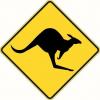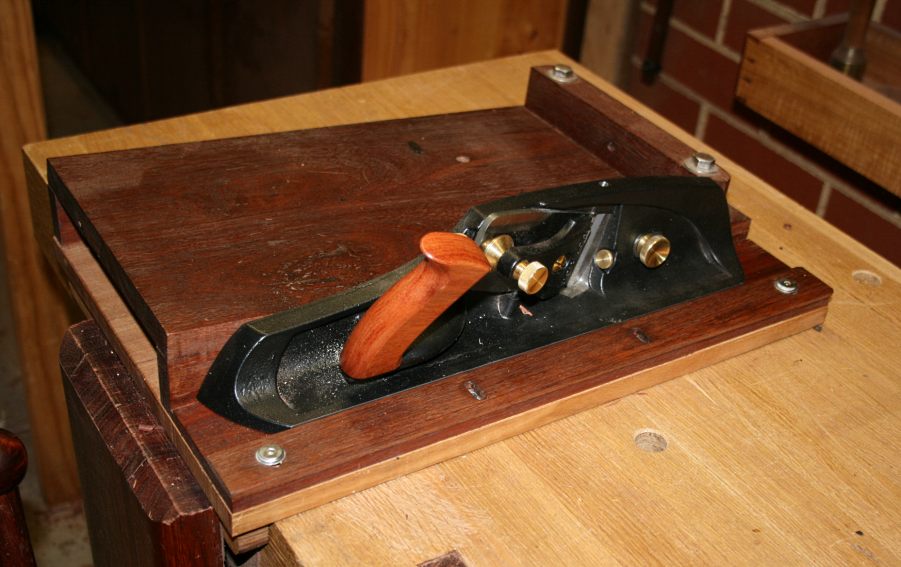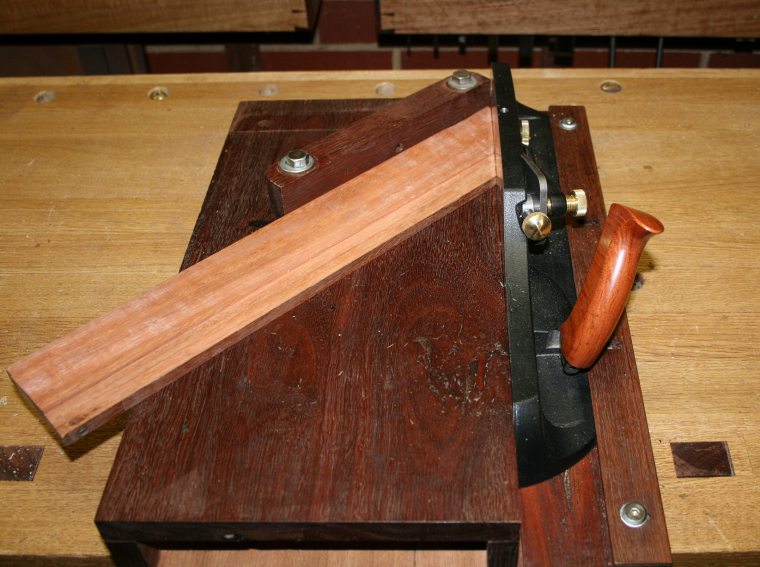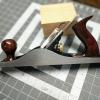A Veritas Left Handed Shooting Plane arrived in my shop recently. My project today actually needed a bit of work on the ol' shooting board…
For quite a few years a Lie-Nielsen #62 Low Angle Jack Plane has served as my shooting plane. At the time it was purchased planes specifically for shooting were not being made. After trying the LN #51 at a Tool Event in Portland, OR my desire was kindled.
After comparing the specifications on the LN and the Veritas shooting planes my choice was to go with the Veritas. The price was better, but so were many other features.
The Veritas Shooting Plane has a lower effective angle of attack. This places less strain on the operator than a plane with a standard frog.
Another feature is three set screws for holding the blade’s lateral positioning:
Shooting Plane Set Screws.jpg
These hold the lateral adjustment setting when the blade is removed for honing. My set up had these a touch on the tight side. The lower screw in the image had to be loosened ~1/4 turn to remove the blade. The set screws use a small, flat blade screw driver.
The plane was ordered with a PM-v11 blade. It was fairly sharp out of the box. When it first arrived it was given a quick test drive using a scrap of ash. The blade is factory ground to 25º with a few degrees added as a secondary bevel.
A little time on my oilstones produced a good edge:
Sharp PM-v11 Blade.jpg
It was a bit surprising to see the bristles of my brush left behind from brushing the wood dust off the plane.
Before starting it seemed a good idea to put a fresh coat of wax on the board:
Waxing the Chute.jpg
Anything to make the work a little easier.
One of my ‘round tuits’ may be to add a side rail guide to my shooting board. Until then it seems to work fairly well/easily with one or two gripping strategies:
Grip 1.jpg
This has two fingers on the blade to press toward the center of the board.
Grip 2.jpg
The casting has a rounded section for the adjustable handle. It is actually comfortable to wrap the pinky & ring finger around that part of the casting. This is fine for a little shooting. For a lot of shooting it is likely to be more comfortable with a guide rail.
The plane required little effort on my part to glide through some spalted holly:
Shooting in Action.jpg
The results are wonderful:
Spalted Holly End Grain.jpg
There is a pale streak across the center of the piece from a small flaw on the blade’s edge. It wasn’t deep enough to split the shaving. A trip back to the stones corrected this.
The skewed blade makes an appreciable difference over my #62. The impact at the beginning of a cut with a straight on blade can be rather jarring, especially with thicker shavings.
jtk







 Reply With Quote
Reply With Quote







